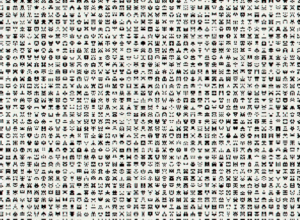The lecture by Casey Reas on Chance Operations was a fascinating look at randomness, and the dynamics between chaos and order. Being a Computer Science major, most code I write is defined by rigid precision. Even areas such as web development which allow some artistic precision, allow this only within set boundaries. The first two weeks of this course have already opened me up to the idea of using code for artistic expression – this video only added to this.
My favorite sections of the videos were the demonstrations where persistent chaos would give way to some sort of symmetry and order. The best example of this would be the “Fractal Invaders” example where, random pixels and some duplication can lead our imagination to see characters and objects.
Having explored principles of Taoism through some of my Philosophy coursework, I have read about how concepts such as order and chaos don’t have to conflict, but can rather enhance each other. I can see this principle floating through the talk, and I hope to integrate this in my later projects through this course.
Moving on, Reas states in the video how “the idea of using a rational machine to do something unexpected at the time was a subversive one”. Here, by “at the time”, Reas refers to the period where computers were still severely limited in what they could do and were just starting to be widely used. However, I believe that this statement may be true even today. Most people choose to use their computers for tasks that are constrained and rigid. Tasks such as playing games, that are intended for recreational purposes, also don’t allow artistic expression which has even become a lot more accessible to everyone using the systems today. As such, I feel it is an avenue for self-exploration, discover, and fun that is overlooked by most people today. I would be highly interested in making a web tool that could enable people to play around with randomness and its accompanying mechanics without needing knowledge of code, but I assume this may be difficult due to the nature of art.
The last point I wanted to touch in this discussion is an emerging technology – and its relation to both art and randomness : Generate AI – specifically diffusion models. Having been interested in the technology powering the space – I know the role randomness plays in it. Having a different ‘seed'(a measure of randomness) with the same ‘prompt'(the input given to the AI) can result in artworks extremely different from one-another. Researchers and enthusiasts have been working constantly to traverse this randomness in an effective way to get the best possible results. But perhaps, there is beauty in this randomness too that has yet to be explored. (The discussion of the ethics of using such technologies is also equally important)

